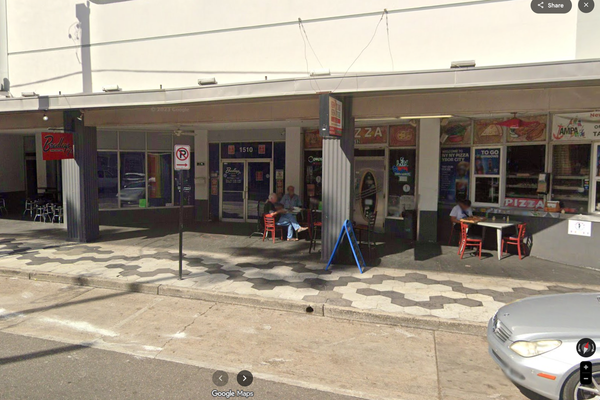 2018’s stock market walks like a 1999 duck… here’s what to do about it:
2018’s stock market walks like a 1999 duck… here’s what to do about it:
First, you are welcome for my not making you endure the tired headline “Partying Like It’s 1999.” Well there, I said it anyway. Because as many times as I try to convince myself that today’s stock market environment is not eerily similar to those that preceded multiple years of financial pain for the overconfident or unaware investor (or financial advisor), I keep coming back to compelling numbers and pictures (charts).

Here is what I see in this chart of the first 7 months of 2018:
- The internet stock index has been the runaway “winner” so far
- The Nasdaq 100, whose largest holdings are also major members of the internet index, is up, but not as much. Blame those silly biotech and smaller tech stocks for holding the FAANG stocks back this year (hope you got the sarcasm there)
- Large Growth stocks are doing well…because the internet stocks that are pulling up the Nasdaq 100 are also part of the Growth index, but not as big a part of it. Blame those silly consumer, industrial and retail stocks which are part of the Growth Index, but just can’t keep up with the internet stocks.
- The S&P 500 is also doing quite well. Not as well as the Growth and Nasdaq Indexes, since it too has FAANG exposure but not as much as those indexes do.
- Large Value stocks have gone into hiding…well, not really, but the line in the chart that represents that index does appear to be somewhat hidden beneath the high-octane returns of the others I have mentioned so far.
- And then, there’s bonds. If you have read my blog before, you probably realize that I have been an unabashed bond market bear. It was veteran market watcher Jim Grant who I first saw point out that the market for U.S. High Grade Bonds (Treasuries and higher-rated Corporate Bonds) swung from bull market to bear market about 2 years ago. This year continues the slow bleed down in bond prices as rates gradually rise. This article is primarily about the stock market, but don’t worry, I will cover the bond market plenty in the weeks and months ahead!

Now, look at this chart. Same market segments, though some are represented here by the actual indexes, not ETFs as was the case in the first chart (most ETFs were not around in 1999). What do you see? I see the same darn patterns, except that here, the Nasdaq (QQQ) is representing both the Nasdaq and the Internet Index in the first chart. There was no formal internet index in 1999 (or if there was, I did not have the data for it). But in 1999, the internet was new to consumers, and the Nasdaq Index was new to investors. So I do think that 1999’s Nasdaq represents the “over-hyped and over-valued” segments of the market, just as Nasdaq and other internet stocks do today.
Other than that slight adjustment, we are 19 years on from 1999, and it appear that investment market behavior is lining up similarly. The key question for you, the investor, is what are you going to do about it? Since I could write a book about that question (in fact, I have written two), and we don’t have that kind of time right now, let’s just boil it down to my suggested DO and DON’T ideas:
DO
- Review your portfolio’s construction carefully (or have a pro do it with you), to identify areas in which you might not realize that you are over-exposed to the same risks, multiple times. My firm sees so many over-simplified portfolios come across our desks from elsewhere, and while the investor thinks they are “diversified,” in reality they just own the same things under different names. Some overlap in holdings is to be expected if you use mutual funds and ETFs, but the key themes are intention and degree. Intentional overlap that can be explained by the portfolio constructor is one thing. But what I find is that often, even the asset allocator doesn’t realize it!
- Ignore the hype – the “stock market” is not going great this year. A smallish but very popular segment of stocks and sectors is doing well. That is creating a mirage for those who think that their portfolios are doing well because they are diversified. In fact, it is the extreme lack of diversification that is benefiting you now…just like in 1999, before those indexes at the top of the chart endured 3 consecutive years of declines.
DON’T
- Go in search of what you think you missed out on. The phrase FOMO has been tossed around a lot this year. That stands for Fear of Missing Out, and it is pervasive through the investor population. Ironically, that FOMO leads to more money chasing the same stuff (the stuff that has done the best recently), which pushes that same stuff higher and higher in price…until it doesn’t. So, I am not saying you should avoid what has done well. What I am saying is that if you do invest in stocks, sectors and themes that have led the market by a wide margin, you determine how long you intend to hold it, how much return you are aiming for from it, and what your exit strategy is. Otherwise, you are destined to be one of those “long-term investors” that, like in the Dot-Com Bust, suffered major losses and never forgave themselves for it.
- Lose focus on what you are truly investing for. This is where some of the most basic, fundamental tenets of investment management come in. All reward potential comes with risk, and usually they are highly correlated (e.g. higher reward potential is accompanied by higher risk). Depending on what you are investing for (retirement in a few years, staying retired, funding goals like education and raising children, etc.), recognize that markets don’t go up forever. But today’s market, as I have explained many times in my Forbes.com articles, is heavily favoring a narrow slice of the market. That does not mean that Value stocks, Dividend stocks, higher-quality growth stocks, hedging strategies, non-U.S. investments, commodities and many other diverse market segments will not have their day. Relatively speaking, their day is not today. But that doesn’t mean they should be “hidden” in your strategic approach the way they are in those charts above. The objective is the thing for you. Don’t get lured in by the “invest in what’s working now” crowd, and stay committed to what you truly want out of the wealth you have accumulated.
For more insight, click HERE.







